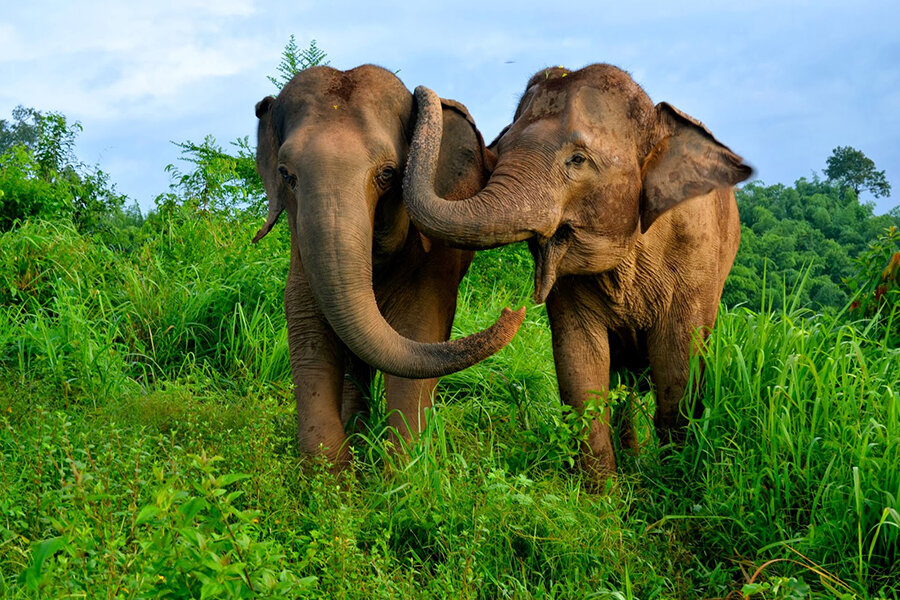What is an elephant handshake?
Loading...
A scientific study now confirms that elephants are indeed touchy-feely.
For example, an elephant comforts another elephant in distress by putting its trunk in another elephant's mouth, almost like an elephant handshake or hug, said Joshua Plotnik, lead author of the study and a lecturer in conservation biology at Mahidol University in Thailand.
"It’s a very vulnerable position to put yourself in, because you could get bitten. It may be sending a signal of, ‘I’m here to help you, not hurt you,'" Dr. Plotnik said in a press release by Emory University.
Researchers, who studied 26 Asian elephants in an elephant camp spread across 30 acres in northern Thailand, published their findings in a paper titled "Asian elephants (Elephas maximus) reassure others in distress" in the open-access journal PeerJ.
“With their strong social bonds, it’s not surprising that elephants show concern for others,” said coauthor Frans de Waal, a professor of psychology at Emory University and director of Living Links at Emory’s Yerkes National Primate Research Center.
Reassurance from elephants can also come in the form of chirping, which is basically a high-pitch vocalization, Dr. de Waal told the Monitor.
In fact, the chirping was heard mostly after a distress event, Dr. Plotnik said. “I’ve never heard that vocalization when elephants are alone. It may be a signal like, ‘Shshhh, it’s OK,’ the sort of sounds a human adult might make to reassure a baby."
A distress event can cause "an individual to become agitated and to signal such agitation to others (which can be visually identified with specific changes in body state – ears forward, tail erect – and movement, and acoustically identified by various vocalizations, specifically trumpets, roars and rumbles)," according to the study.
“When an elephant gets spooked, its ears go out, its tail stands erect or curls out, and it may emit a low-frequency rumble, trumpet, and roar to signal its distress,” Plotnik says.
Also, researchers noted that pachyderms express a kind of "emotional contagion, which means that the distress and fear of one will spread to others, who adopt the same emotional state. They are literally in sync with others," de Waal says.
This is akin to watching a movie "when a character on the screen is scared; the hearts of the couple watching might race and they might move a bit closer and hold each others hands," said Plotnik.
Consolation behavior has been documented in great apes, canines, and certain corvids (crows, ravens, magpies, jays, etc.).
De Waal says that it is possible that African elephants could also exhibit the same kind of behavior currently observed among Asian elephants.
“This study is a first step,” Plotnik said. “I would like to see this consolation capacity demonstrated in wild populations as well.”








